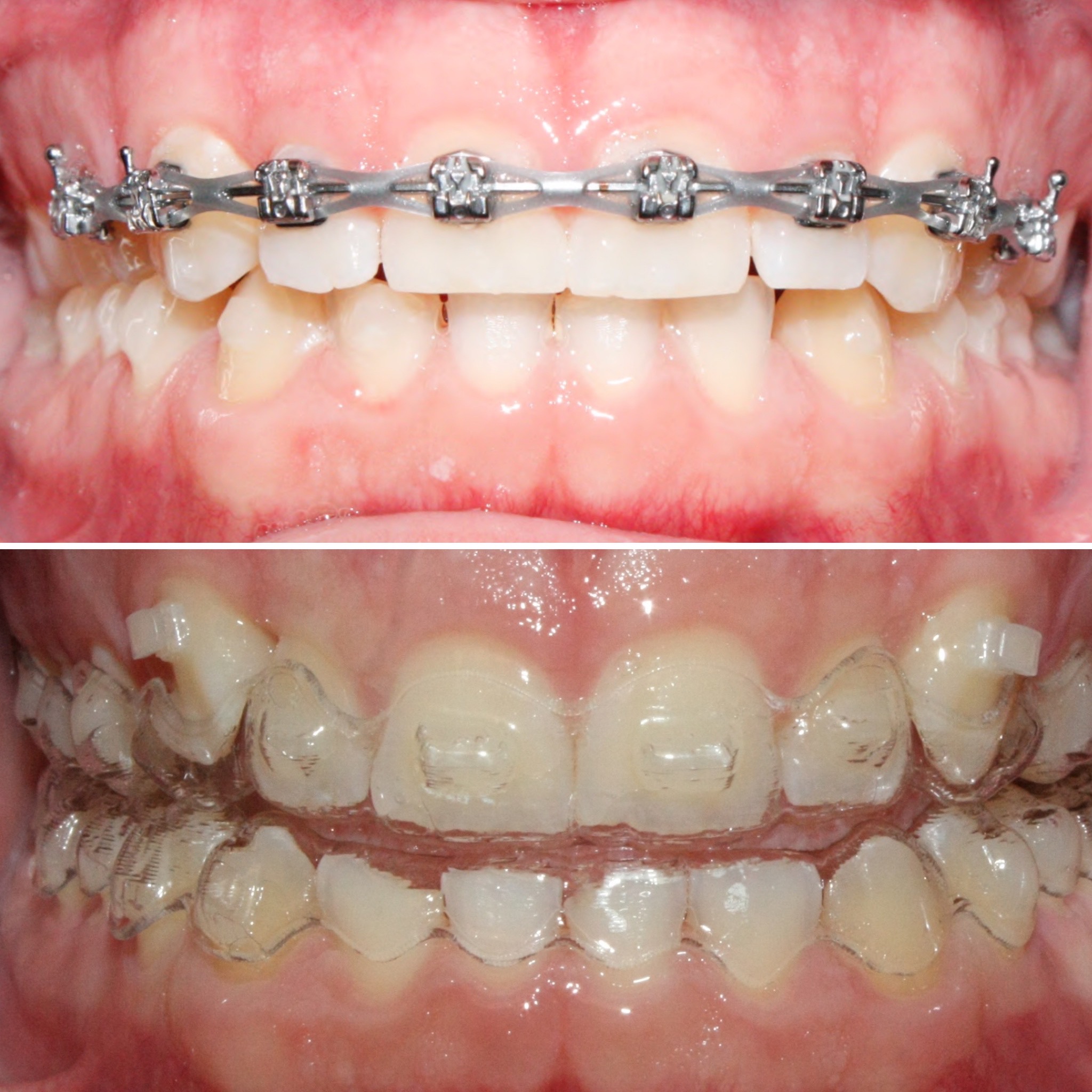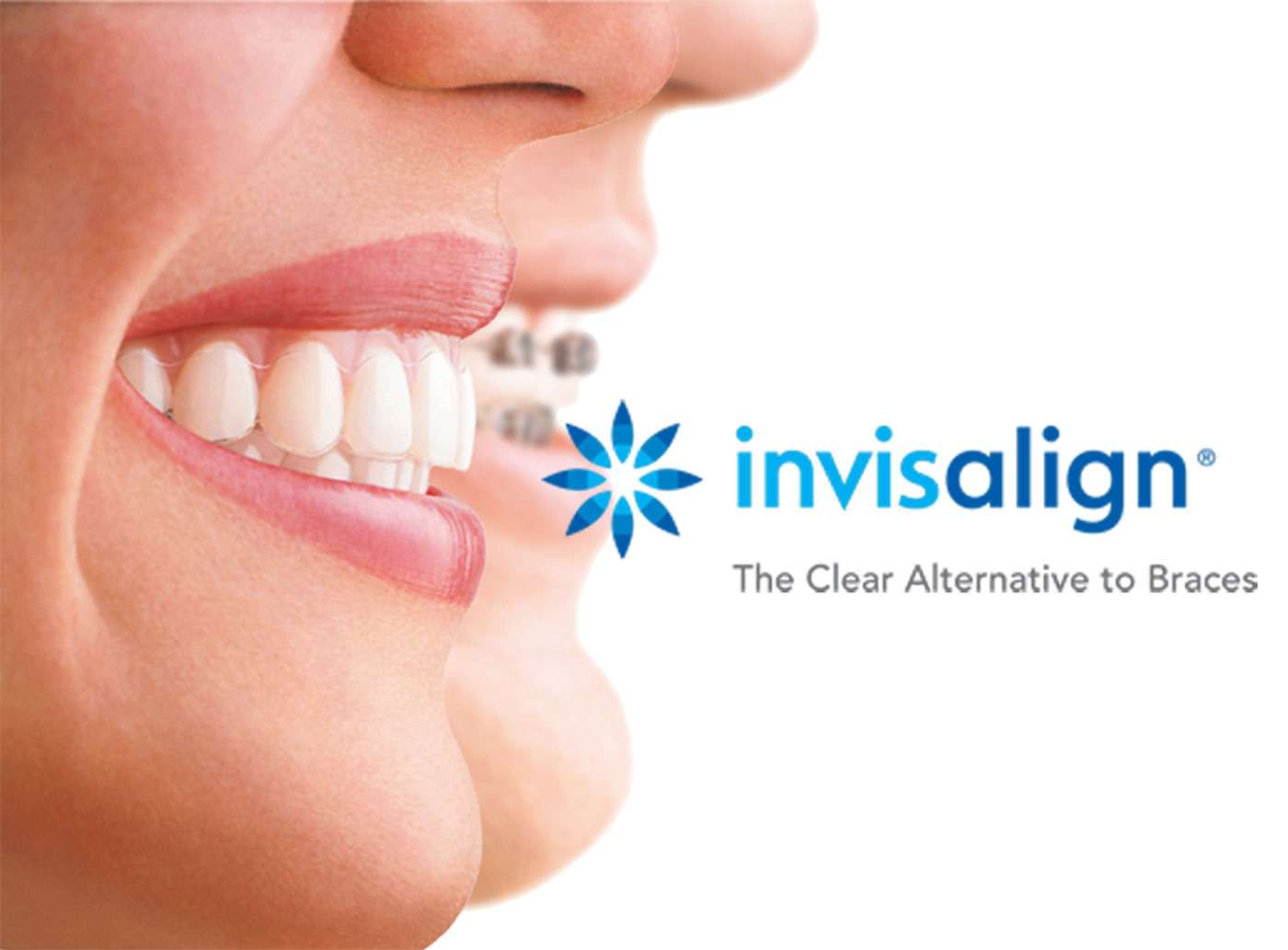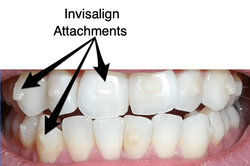Invisalign vs. Typical Braces: Which Choice Is Right for You?
When considering orthodontic treatment, the selection between Invisalign and typical braces provides several vital variables that merit mindful examination. Invisalign offers a discreet alternative with removable aligners, while typical braces offer an extra noticeable yet efficient solution for serious imbalance. Each choice includes distinctive benefits and downsides connected to aesthetics, convenience, treatment period, and expense. Comprehending these subtleties is vital for making an educated choice that lines up with your individual preferences and way of life. The inquiry stays: which alternative will finest meet your orthodontic demands and assumptions?
Summary of Treatment Options

In contrast, typical dental braces are composed of steel braces and cords that are adhered to the teeth. This technique applies continuous pressure over time to achieve alignment. While reliable for complex orthodontic concerns, conventional braces call for normal sees for changes and can present challenges in keeping oral health because of the problem of cleaning about wires and brackets.
Both choices have their advantages, and the choice often hinges on particular dental problems, way of life choices, and client compliance. Ultimately, speaking with an orthodontic expert is vital for establishing the most suitable treatment strategy customized to private demands. Understanding the nuances of each choice can substantially affect the overall success of orthodontic therapy.
Aesthetic Considerations
A considerable variable affecting the selection in between Invisalign and traditional braces is the visual allure each treatment supplies. Invisalign aligners are crafted from clear plastic, making them essentially unnoticeable when worn. This very discreet appearance is specifically interesting grownups and teens who may feel uncomfortable regarding their orthodontic therapy. The ability to maintain a natural smile throughout the alignment procedure can significantly boost the person's self-confidence in specialist and social setups.
In contrast, typical dental braces contain metal brackets and cables, which can be much more noticeable. While innovations in orthodontic technology have brought about the development of smaller sized braces and colored elastics, traditional braces still preserve a more conspicuous account. For some individuals, the exposure of braces may prevent them from looking for required therapy.
Inevitably, the choice in between Invisalign and standard dental braces might hinge on individual preferences regarding appearances. Clients that focus on discretion typically favor Invisalign, while those that are much less worried regarding exposure might go with conventional dental braces. Comprehending the aesthetic ramifications of each option is essential for making an informed decision that aligns with one's lifestyle and choices.
Convenience and Convenience

In regards to ease, Invisalign aligners are removable, making it possible for people to enjoy their preferred foods without limitation and keep optimal oral health. Brushing and flossing are simplified, as the aligners can be gotten throughout these routines, whereas conventional braces require mindful maneuvering around wires and brackets.
In addition, Invisalign's dynamic system enables less orthodontic sees. Individuals normally get numerous collections of aligners at the same time, which can simplify the treatment process and lower time spent in the orthodontist's chair. In comparison, typical dental braces necessitate normal adjustments, making them much less hassle-free for those with hectic schedules. Invisalign. On the whole, the comfort and convenience of Invisalign make it an enticing choice for several individuals seeking orthodontic therapy.
Therapy Duration and Efficiency
While both Invisalign and standard braces work in dealing with oral misalignments, the period of therapy can differ substantially in between the two go to my blog options. Generally, Invisalign therapy can take anywhere from 12 to 18 months, relying on the intricacy of the situation. The clear aligners function by progressively changing teeth into their desired placements, and regular follow-ups with an orthodontist aid make sure progress continues to be on track.
In contrast, conventional dental braces typically call for a longer dedication, typically ranging from 18 months to three years. This is because of their fixed nature and making use of braces and cables, which can be a lot more effective for serious misalignments and intricate situations (Invisalign). The treatment effectiveness of standard braces is well-documented, as they permit accurate changes and greater control over tooth movement
Ultimately, the selection in between Invisalign and standard braces might hinge on both the awaited therapy duration and the this hyperlink particular dental issues at hand. Consulting with an orthodontist is important, as they can supply customized referrals based upon individual needs, guaranteeing the chosen approach aligns with desired outcomes and durations.
Price Comparison and Insurance Coverage Choices
Cost plays a considerable role in the decision-making process for individuals considering orthodontic treatment, whether deciding for Invisalign or traditional dental braces. Generally, the cost of Invisalign varieties from $3,000 to $8,000, while typical braces generally cost between $2,000 and $6,000. Elements influencing these costs include the complexity of the instance, the duration of therapy, and geographical area.
Insurance policy protection can significantly affect out-of-pocket expenditures. Several oral Going Here insurance plans supply partial insurance coverage for orthodontic treatments, however the specifics can vary commonly. It is critical for individuals to evaluate their insurance policy plans to figure out the extent of insurance coverage for either alternative. Generally, traditional dental braces might be more often covered by insurance policy strategies contrasted to Invisalign, which some insurers categorize as an aesthetic procedure.
Furthermore, numerous orthodontic practices use adaptable layaway plan, making both treatment choices more available. Individuals need to ask about prospective financing options and price cuts for in advance settlements. Reviewing the complete price, including insurance advantages and layaway plan, is important for making an informed decision that straightens with both visual preferences and budget plan factors to consider.

Final Thought
In recap, the selection between Invisalign and conventional dental braces depends upon several factors, including visual choices, comfort, treatment period, and price. Invisalign offers a discreet, removable alternative that facilitates dental hygiene and dietary adaptability, while conventional dental braces might be a lot more appropriate for complicated dental issues and commonly come with a lower cost point. Eventually, appointment with an orthodontist is necessary to analyze individual situations and identify one of the most ideal treatment option for accomplishing optimal dental positioning.
When considering orthodontic therapy, the choice between Invisalign and typical braces provides a number of crucial elements that merit careful examination.Comparing Invisalign and standard braces discloses distinctive treatment options for orthodontic improvement.While both Invisalign and conventional braces are efficient in remedying dental imbalances, the period of therapy can differ substantially between the two choices.Cost plays a significant duty in the decision-making process for individuals considering orthodontic treatment, whether choosing for Invisalign or conventional braces.In recap, the choice between Invisalign and standard dental braces pivots on several variables, consisting of visual preferences, comfort, therapy duration, and cost.